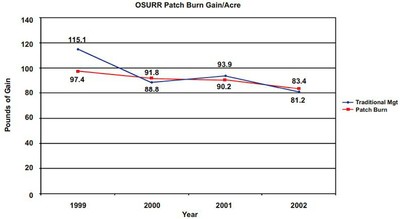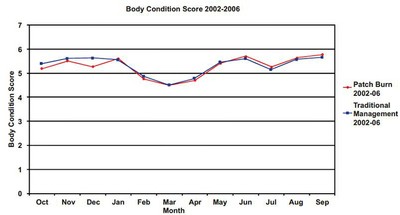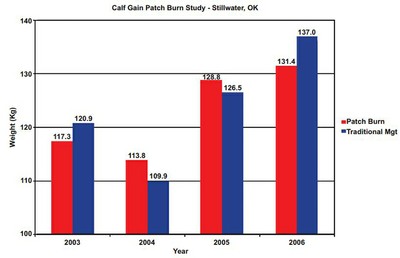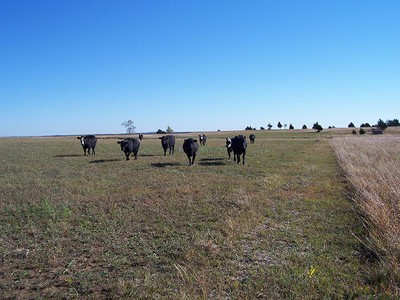Domestic Livestock Production
In studies comparing patch burning to pastures managed with traditional management practices, weight gains of stocker cattle did not differ. This is from four years of data taken from tallgrass prairie at the OSU Research Range (OSURR) located west of Stillwater, Oklahoma and from nine years of grazing data from mixed-grass prairie at the Marvin Klemme Range Research Station (MKRRS) near Bessie, Oklahoma (Figure 9).
Preliminary data suggests that patch burning has the greatest benefits to cow-calf operations, if patches are burned in different seasons of the year. Body condition score of cows, and calf weight gain were the same for patch burning and traditional management pastures in four years of observations on spring-calving cows on the OSURR (Figures 10, 11). Because growing-season burns (July-August) provided access to high quality forage during the fall months, the patch burn cows were not fed any supplement until the first of January every year. In contrast, the traditionally managed cows where provided protein supplement starting the first of November each year. This reduction in supplemental feeding and other associated costs is a meaningful economic benefit of patch burning to the producer.
Other benefits of patch burning to livestock production include:
- Uniform utilization of forage over the entire pasture over a period of years
- Ease of checking cattle.
- Deferred grazing before or after burning is not required and livestock can be left in the pasture while burning the next patch.
- Forage accumulated in rested patches is a form of “grass banking”—holding forage in reserve for drought.
- Better brush control because fire in “rested” patches is more intense than in pastures managed traditionally.
Figure 9. The gain/acre (lb) of yearling steers at the Marvin Klemme Range Research Station located at Bessie, OK (top) and OSU Research Range located at Stillwater, OK (bottom).
Figure 10. Body condition scores of cows on pastures managed with patch burning and traditional management at the OSURR did not differ over four years. Cows on patch burned pastures where also fed (1 Jan-1 Apr) less supplement (4 months) during the winter months than the traditionally grazed cows (1 Nov-1 Apr).
Figure 11. Calf weight gains on pastures managed by patch burning and traditional grazing did not differ.
Caption: Late summer burns provide cattle with access to high quality forage late into the fall months (area cattle are on), thereby reducing protein supplements and associated costs. Photo John R. Weir.





